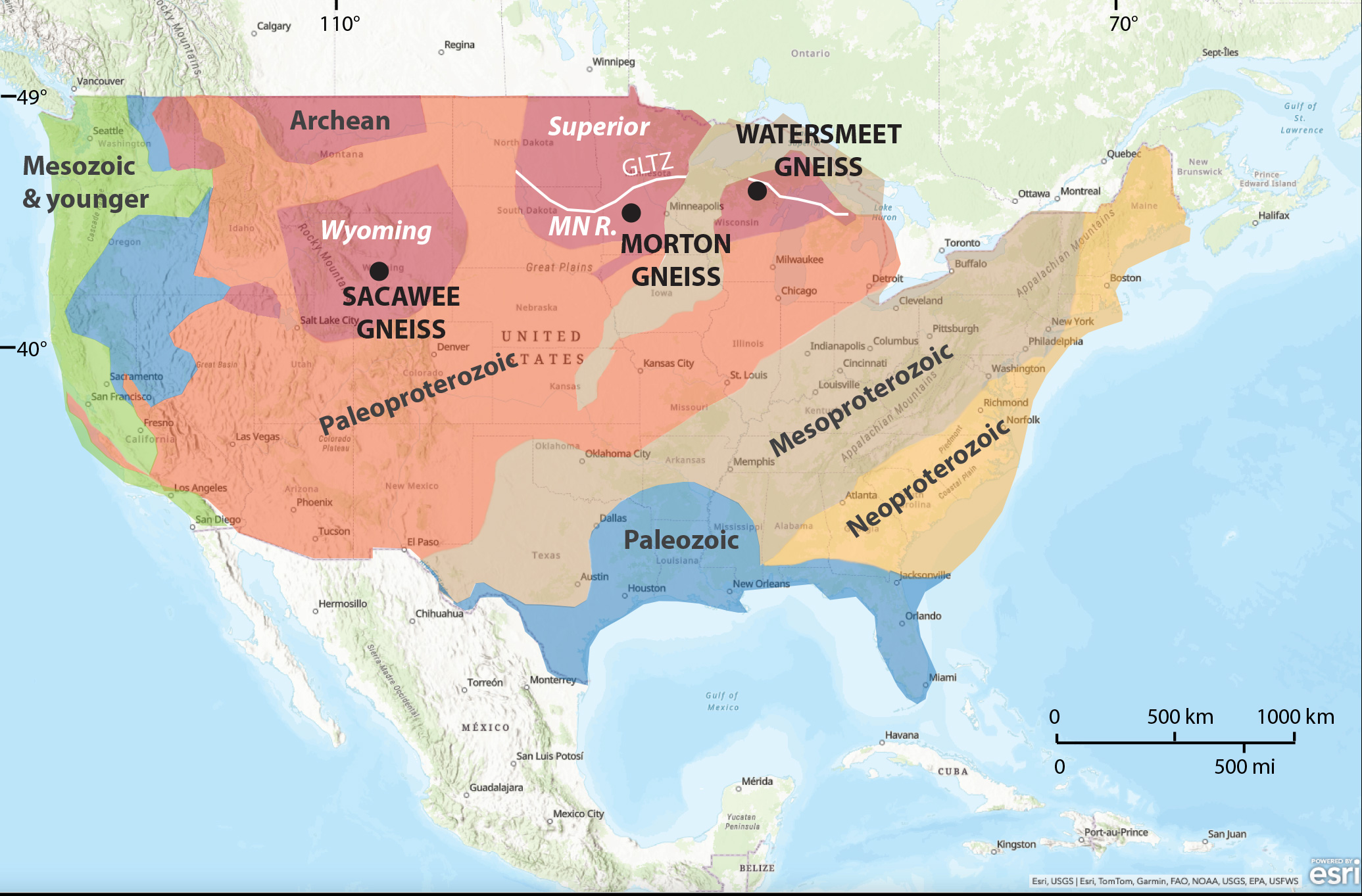A team of geologists have conducted a survey of likely candidates to identify the oldest rock in the United States. Their work is not merely to arbitrate a battle over which state gets a chance to lure in some tourist dollars; it offers insight into the difficulties of defining a rock’s age. Most of all, however, it’s an opportunity for Canadians to feel smug as the holders of the original part of the North American – and potentially any – continent.
A sign beside an outcropping of Minnesota’s Morton Gneiss claims to mark the “World’s Oldest Rock.” However, if false advertising were still something that came with consequences, those responsible for the sign would be in plenty of trouble.
The Morton Gneiss was assessed in 1974 as being 3.8 billion years old. The next year The Yellow Medicine County Historical Society decided to jump in with the claim before such measurements had been carried out across most of the planet, posting a sign near an outcrop in the appropriately named town of Granite Falls. Not only do we now know that Canada’s Acasta Gneiss is 4 billion years old, but more advanced techniques have shifted estimates of the Morton to 3.5 billion at best.
Confirmation, if it were needed, that Americans are not as gneiss as their northern neighbors. However, the Morton Gneiss is a popular building item, and acknowledging there are older rocks might hurt its value.
The USA has no plausible challenger to the Acasta (although Greenland might) but that doesn’t mean the Morton Gneiss is the local champion. After a discussion over beers, Professor Bob Stern of the University of Texas at Dallas and a PhD student challenged fellow geologists with the question of which was America’s oldest rock.
The problem in identifying the nation’s rock of ages is that geologic activity can recycle rocks, raising questions as to whether their age is defined by when they reached their final form, or when the earlier version was made. The oldest minerals on Earth are thought to be zircon crystals from the Jack Hills of Western Australia that cooled from magma 4.4 billion years ago, not long after the Earth formed. However, the rocks these were once part of have long-since eroded. The zircons subsequently got incorporated into other rocks in the course of sedimentary activity, and have eroded out of those as well, possibly several times.
We can date the zircons quite accurately, because their chemistry excludes lead on formation, but allows uranium in. The radioactive decay of the uranium to lead, which occurs at well-known rates, allows us to work out how long the zircons have been intact, although sometimes encounters with hot neighbors can strip some of the lead away.
It’s considerably more difficult to determine the age of a rock, which may incorporate crystals from older rocks of differing ages.
Stern and co-authors report the Morton Gneiss contains zircons with ages of 3.5, 3.3, and 2.6 billion years. There’s an argument then for taking the youngest age and seeing the older ones as remnants of things past. A more generous assessment is that two rocks got mixed together, and the 3.5 component still counts.
That 1.3-billion-year range looks small compared to Michigan’s Watersmeet Gneiss, which contains zircons 3.8 billion years old, as well as some that are just 1.3 billion. Nor were these merely pressed together by the weight of crust above. There are signs of a volcanic intrusion and tectonic upheaval.
Despite the presence of crystals almost two-thirds younger, Stern’s team have designated the Watersmeet Gneiss 3.6 billion years old, based on the presence of similarly aged crystals in close proximity. They have ruled it the oldest they have measured in the United States. The peer review process has revealed no evidence of undue influence being applied by the Michigan tourism board.
The team created this video to discuss the question in more depth and explain their methodology.
All these rocks are at the surface, although they almost certainly spent most of the time since formation within the Earth where they were protected from weather and geologists wanting to cut chips off them. Professor Mark Harrison of UCLA, who was not involved in the research, noted to ScienceNews that older rocks probably lurk below, waiting for a geologist keen to make their name to find them.

The ages of America’s basement rocks, with red being the oldest. Notice how the authors stopped the map at the borders?
If anyone wants to grab a pick and shovel to join the rush, the authors provide the above handy map. This shows that along with Michigan and Minnesota, Wyoming – where 4.0 billion-year-old detritus zircons have been found – probably hosts the most promising candidates, with some excursions into neighboring states.
They’re all whippersnappers compared to their international counterparts, however. Perhaps President Trump’s designs on Canada and Greenland represents a form of age envy, in which case Western Australia had better look out.
The study is published open access in GSA Today: The Membership Publication of the Geological Society of America.
Source Link: The USA Has Found Its Oldest Rock at 3.6 Billion Years Old, But Canadians Won’t Be Impressed